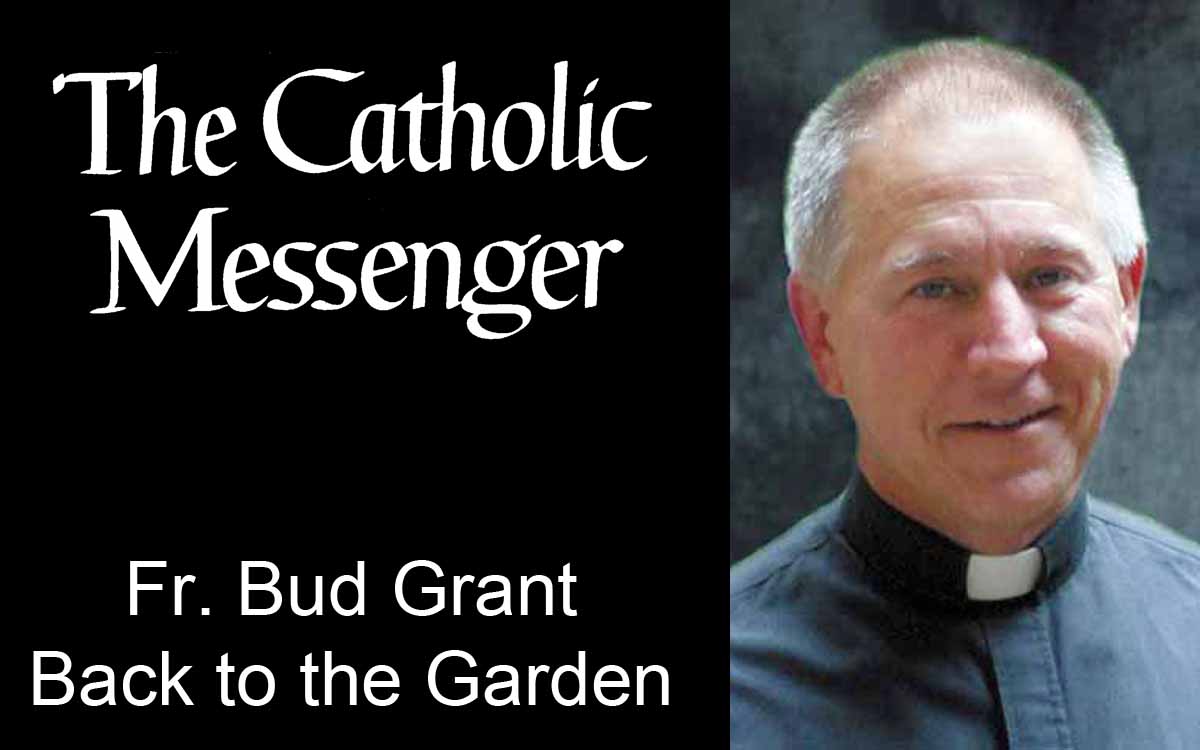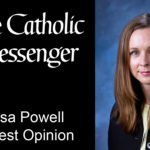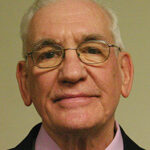By Fr. Bud Grant
My friends and I stood on a lip over which spilled a sometimes stream/sometimes waterfall from the perfect lake behind us. Beneath us the creek bowed its slithery way across a boggy meadow until it linked up with yet another sprawling lake. We were in the Medicine Bow range of southeast Wyoming — a small preserve boasting a stunningly varied ecosystem. This was our annual retreat, conference and holiday (in the original meaning of that Anglicized word).
 We were an artist/entrepreneur, an ecologist and me. We took turns “reading” the landscape. Matt’s artistic eye caught the scene framed by the forested far bank of the lower lake, tree stands left and right and the rim upon which we stood. One’s eye focused on the deep green heart of the valley where a bone-straight white line marked the decay of a long-fallen lodge-pole pine. Chad’s scientific perspective picked out the clustered vegetation, signaling variations in moisture, shadow and soil. I was struck by anomalies such as a perfectly round well-sized bog as though it had been a farmstead at one time.
We were an artist/entrepreneur, an ecologist and me. We took turns “reading” the landscape. Matt’s artistic eye caught the scene framed by the forested far bank of the lower lake, tree stands left and right and the rim upon which we stood. One’s eye focused on the deep green heart of the valley where a bone-straight white line marked the decay of a long-fallen lodge-pole pine. Chad’s scientific perspective picked out the clustered vegetation, signaling variations in moisture, shadow and soil. I was struck by anomalies such as a perfectly round well-sized bog as though it had been a farmstead at one time.
By our third day we’d made a game of interpreting our experience: browned Kentucky bluegrass meant a cattle-grazed summer pasture; those sedges and what, rushes? warn us that we’ll sink into marsh if we try that shortcut; the middle-of-the-night clattering and walloping “thump!” was just a boulder dislodged by the night-cooled shrugging of the mountainside (we hoped).
Chad taught us about the coefficient of conservation, which is a rubric for measuring how “native” a place is. A “10” is a pristine system. Sadly, a “4.5” is considered a great score, indicating a “remnant” ecosystem and, anyway, a higher score is utterly rare. He knows an ecologically minded farmer who, upon returning from war service, told his dad that he would never use chemicals because, for him, natives meant “America” and he “never wanted to be in a place and not know whether or not he was in America.” Also, he liked song-birds.
Matt, who teaches through interrogatives, drove our conversations in the direction of truth and modesty and away from polemics, hyperbole and unsubstantiated claims. He noted that the best conversations were those which “end someplace other than where it began.” By that he meant that if we warmly listen to one another we will become dislodged from the frosty adherence to our own points of view.
All of us, it must be said, are terribly worried about the future. Viewing a fragmented glacier across yet another cobalt blue lake, it was impossible not to acknowledge that my companions’ kids would never see it. The imperial stag which turned its royal rump to us in disdain was a mule deer, whose population is steadily eroding before the aggressive pressure of the “weedy” white tail.
Though we dutifully hung our bear bag each night, none of us really thought it was necessary. The lake trout, so attractive to people who fish, are exotics. And though it was August, the nights were very cold … one can’t even say “unseasonably” so in this new age of climate chaos. The corn fields we passed in western Nebraska not only suggested further depletion of the Oglala Aquifer (a nonrenewable resource) or competition for Iowa farmers. They screamed of a blind federal policy that ignores the fact that what Donald Woster (a fantastic environmental historian) called the “Arid West” is steadily moving East.
Walking is a metaphor for life, as Homer, Chaucer, Frost and Cormack McCarthy know. On the trail, using the sun shadow as our compass, we could usually tell what direction we were “sauntering” (to echo Thoreau). Besides, it’s the journey not the destination that counts. Back to the trail head, renewed in relationship to one another and to God’s creation, I worry that, in general, we’ve lost our way.
(Father Bud Grant is a professor of theology at St. Ambrose University in Davenport.)











